Jamie Eddy is the maintenance guy at the retirement home in Petersburg, Alaska. He’s one of about 3,000 souls who live on Mitkof Island, and only one of the few who chase trout and salmon with a fly rod.
“There aren’t too many fences here,” he says as he navigates two visiting anglers up into the Southeast Alaskan rainforest in search of coastal cutthroat trout. “For people who come here, it’s hard for them to grasp that this belongs to them just as much as it does to me. It’s your forest, too.”
Indeed, the Tongass is the nation’s largest national forest, and likely the nation’s most intact. Its spongy muskeg meadows and towering groves of old-growth cedar, spruce and hemlock nurture everything from black and brown bears, mountain goats, moose and, of course, salmon, trout and char.
But the salmon in the southern panhandle are late this year—the famed “rapids” on the Blind River Slough only minutes from downtown Petersburg hold a few sketchy and dark kings leftover from the spring run, but the pinks, chums and silvers haven’t shown up yet. Out in the Wrangell Narrows, the seiners are just now starting to get into the Stickine River run of sockeyes.
“I hear the cohos are just around the corner,” Jamie says, turning is big Dodge pickup onto Three Lakes Road, where we begin to climb up and away from the coast. “And normally, the pinks would be here by now. But if you live here, you learn pretty quick that it’s not always about the salmon, especially if you like to fly fish.”
The region experienced a relatively mild winter—there wasn’t much snow up in the mountains of Mitkof and certainly not much in Petersburg. And summer has been mild and a bit on the dry side.
“You have to remember that we really live on top of a big sponge,” Eddy says. “And if the sponge is dry, it has to fill up before the water makes its way into the rivers and streams.”
One look at the Southeast weather during the weeks leading up to our visit, and it’s easy to understand what Eddy is talking about. Certainly, the rain that fell over the last 10 days or so helped, but if you consider Eddy’s sponge analogy, there might be more rain needed to saturate the ground and start the water discharge into the tea-colored waters of the rainforest.
And salmon, of course, need a number of elements to fall into place before a spawning run can really get going, starting with habitable ocean conditions and ending with ample cold water coursing down their natal coastal streams. And most fly fishing in Southeast starts with salmon, either as fly-rod targets themselves, or as the critter that attracts the other fish often targeted with fly rods in this corner of Alaska—the Dolly Varden.
But there’s another fishery that’s rarely tapped by fly fishers in the region, and Eddy takes full advantage of it during the lulls between salmon runs that happen now and then, and of course, when his duties taking care of the “Grandma Mafia” in Petersburg aren’t taking up too much of his time. Sea-run cutthroat trout are plentiful and more than willing to take a fly or a pegged bead. Armed with a light fly rod (a 3- to 5-weight rod can be ideal), an angler can wander the Mitkof road system and find coastal cutts in just about every trickle—even the “high-country” meadow streams that course with black, tannin-stained water and are often backed up by beavers and see more moose than fishermen over the course of a summer.

“These streams won’t see another fisherman all year,” Eddy says. “I’ll probably be the only guy who comes here to fish.”
But don’t expect it to be easy. Here in the rainforest, getting to the water is half the challenge. Navigating salmonberry bushes and ferns that grow over ankle-twisting holes in the forest floor are plentiful, and the last thing you want to do is reach out and grab a handful of devil’s glove, a barbed plant that leaves its spines stuck into the skin of its victims.
“They really hurt,” Eddy says, recalling the last time he made that mistake. “Sometimes, they just have to fester out. They’ll ruin your day, that’s for sure.”
And this time of year, especially after a dry spell—before the sponge is saturated—the water can be pretty skinny. This means the cutties will be holed up in the deepest, darkest waters and they’ll be extra wary.
“These fish have so many predators,” Eddy explains. “Everything from hawks, owls and eagles to mink and otters—they are very spooky.”

Describing cutthroats as “wary” and “spooky” doesn’t make sense at first—in the rivers of the Rockies, cutthroats are always looking up, always willing to hit a fly and generally considered among the easiest trout to catch. That’s simply not the case here under the rainforest canopy where they can be picked out of shallow runs by attentive raptors, pursued by otters and mink, or chased by big Dollies that follow the salmon upstream.
So, naturally, they avoid the shallows when the salmon aren’t in the water dropping eggs.
As we wandered down one of the many small streams located along the road system on Mitkof, we arrived at a deep bend accentuated by a giant fallen cedar, half of which sat submerged in the dark water—a classic rainforest honey-hole that Eddy knew would be full of coastal cutts. But the trick, he said, would be getting them to take a fly.
We positioned ourselves perpendicular to the deep water, and cast weighted Polar Shrimp patterns up against a grove of overhanging ferns and devil’s glove. It took a while to find the right approach, but soon we were letting the bright pink and orange flies sink and disappear into the depths of the pool. Only when the flies were completely out of sight did we give our lines a quick strip. And the first few casts resulted in some violent hits—from our elevated perspective we could see truly large cutthroats—some pushing 17 or 18 inches—swiping at the fly as the retrieve got faster and faster. And, the closer the fly got from “escaping” the depths, the more desperate the swipes became. Finally, inches from the edges of the drop-off between the tan, sandy riverbed and the black-as-night hole up against the bank, the fly would attract an in-earnest taker.
But, we only got a few casts in each little sweet spot. Unlike their inland cousins, these trout that spend much of their time nosing into the saltwater and experiencing the intense food chain that lies beneath the surface of Frederick Sound and the Wrangell Narrows have learned to be careful. Once a fish or two is yanked from the depths and then released, the rest of the congregation catches on, and it’s time to move to the next pool, the next bed or the next deep run. And on most of these lush mountain streams, than simply meant we had to wander around a bend in the stream, or hop on a bear trail and explore.
Coastal cutts like big water, too. In fact, in Blind River Slough, they were the first takers when we drifted pegged beads or swung bright streamers through likely runs. We coaxed a few nice cutthroats to hand using the beads, but the biggest fish of the day hit big, bright streamers, and they hit them hard. But the drill was about the same—we’d get a half-dozen casts per run, and maybe stick two or three fish. Then it would shut down. Needless to say, we moved around a lot.
As an attractive bonus, we also managed to get into a few bright jack kings and a couple of truly gorgeous tail-walking rainbows that taped out at about 12 inches—perhaps the adolescent version of the legendary 30-plus-inch steelhead that return to the drainage every spring.
Salmon make the fishy world go around in Southeast Alaska, but during their rare absences in the summer and fall, sea-run cutthroats are ideal fly rod targets, and Mitkof Island is a great place to chase them. Old logging roads criss-cross the Tongass, offering relatively easy access for anglers who might have a day or two to burn on an Alaskan adventure, or for those interested in a do-it-yourself trip to Southeast. There’s little need to bring any special gear or unique flies, either—they’ll hit the same patterns and beads that Dollies, pinks and silvers will hit. About the only concession anglers might consider is a lighter rod—a 5- or a 6-weight rod will work near the salt, and something even smaller would be a lot of fun on some of the higher-elevation streams.
If you go
When: Coastal cutthroats are in the estuaries and river systems of Mitkof and throughout Southeast all summer long, and they’ll mingle with Dollies and rainbows that follow the salmon into the streams with every run. But they can also be found in smaller streams higher up in these systems from June through October. One thing to keep in mind: this area is a summer-long fishery. It’s likely that your best chance to catch a big Southeast Alaska king salmon on the fly is at the rapids on Blind River Slough starting in June and continuing into July. Then, during normal years, pink and chum salmon start to show up in streams all over Mitkof, followed by the silvers in August and September. Dollies, cutthroats and rainbows accompany the salmon all summer long.
Where to stay: Petersburg is a funky little town at the end of the Wrangell Narrows and Frederick Sound. It’s literally “the town that fish built,” and it has a colorful history as a community founded by Norwegian fishermen in the late 1800s. Today, commercial fishing is still king, but recreational fishing, including fly fishing, is carving out a nice little niche for itself. As a bonus, you won’t be fighting the cruise ship crowds you’ll find in Juneau and other towns along the Inside Passage—the big boats can’t get through the Narrows, and, if you ask almost anybody in Petersburg, that’s exactly the way they like it. If you find yourself in Petersburg during the summer months, you’d be silly not to plop your head down at the Scandia House hotel for a night or two, and walk the quirky shops of the downtown area and historic Sing Lee Alley. There’s a truly touching memorial to the town’s fishermen lost at sea, which sits right next to the iconic Sons of Norway Hall. And if you like seafood, you likely won’t get fresher salmon or halibut than you can find at Coastal Cold Storage, which doubles as a seafood wholesaler and a great little diner right on Nordic Street, the town’s main drag.
Getting around: If you don’t have a fishing buddy like Eddy to show you his home waters, don’t sweat it. You can rent a car from the Scandia House and be at Blind River Slough and the legendary rapids in less than 20 minutes. And, according to Eddy, you’ll cross at least two other fishable streams on your way there.
How to get there: Petersburg can be reached via a direct flight on Alaska Airlines from Seattle, and it’s also accessible by the Alaska Marine Highway System—the famed ferry that runs along the inside passage and makes stops in places like Juneau, Wrangell and Ketchikan, among others.

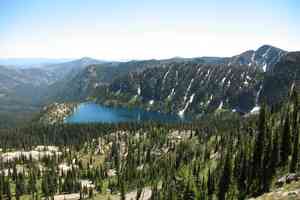
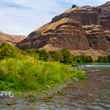

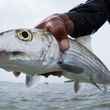
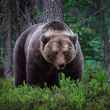
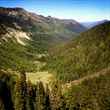
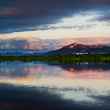
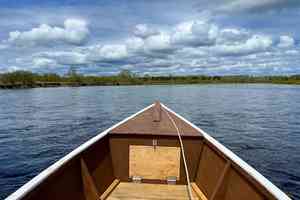
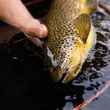
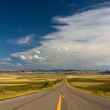
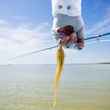

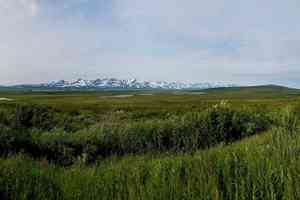
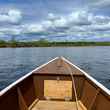
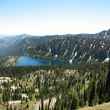
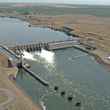
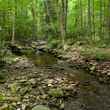

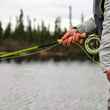

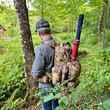
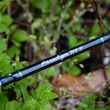
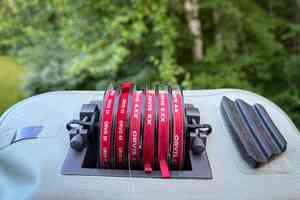
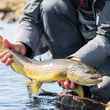
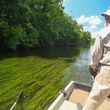
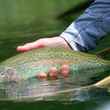
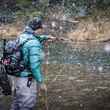
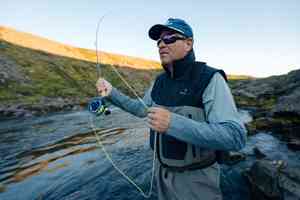
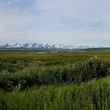
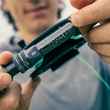
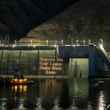
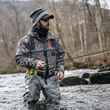
Comments